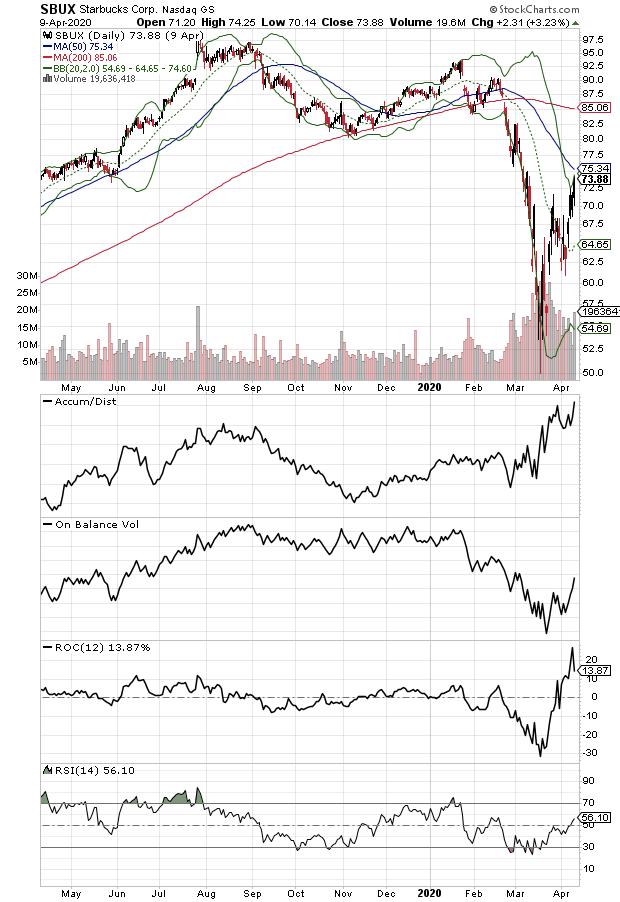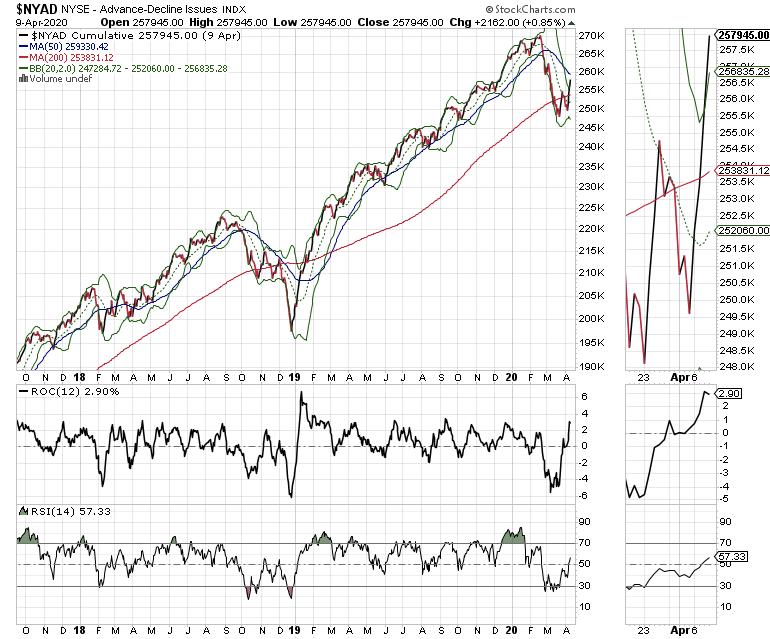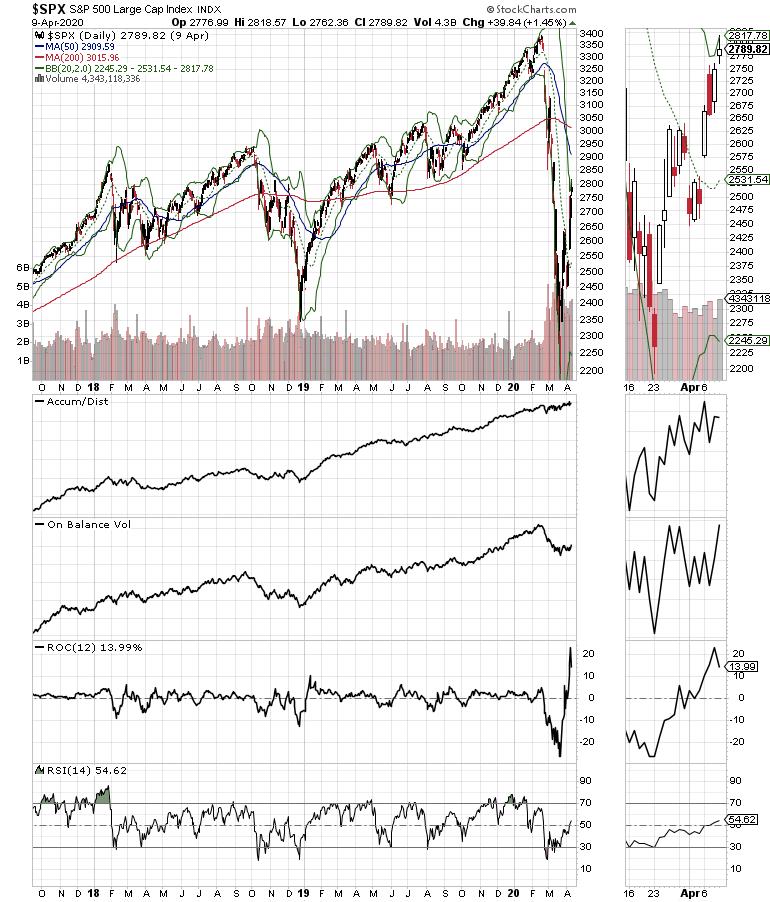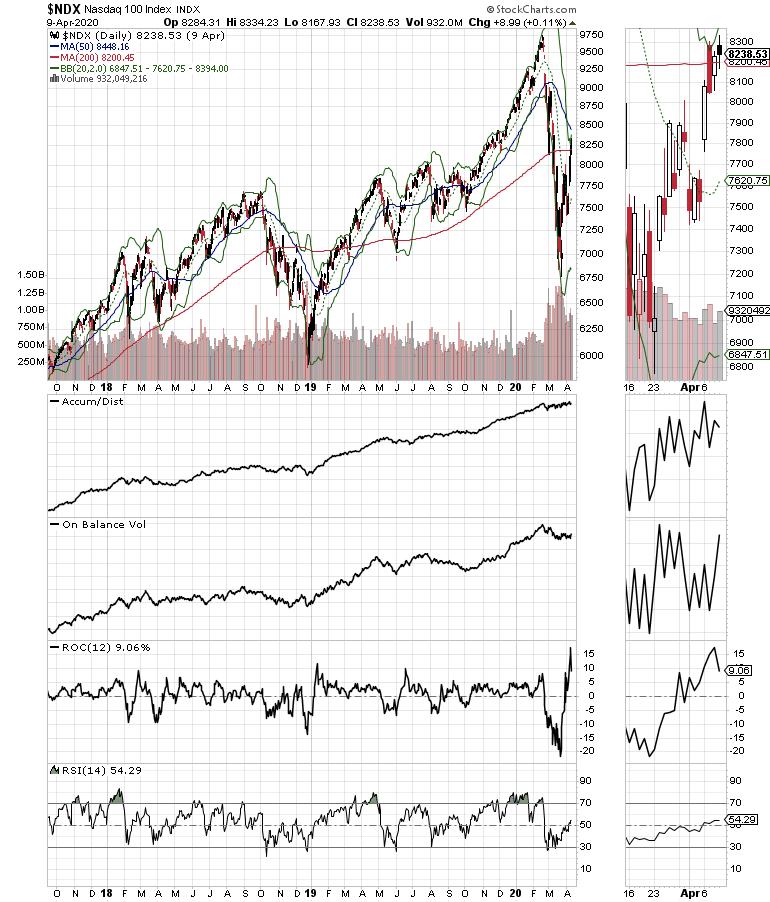The market, as I thought might happen, has given the bulls a short-term all-clear signal, which means that, until proven otherwise, the bulk of any trading strategies should be geared to the long side. Nevertheless, as I describe below, the system is far from being fully back on solid footing. Thus, given the ongoing uncertainty about the coronavirus and the global economy, risk management remains a paramount objective.
As has become a customary ritual now, I must note that all things in the world and the market could change by Sunday night, as the futures markets could open 1000 points up or down. Thus, investors should remain wary regardless of the positive developments that occurred last week.
Last week, I wrote: "The stock market is signaling that a big move is coming. And although there is no guarantee, it could certainly be an upside breakout," while further noting "If I was an algo programmer, I would unleash the BUY program to end all BUY programs as the way to recovery for MEL will be via the 401 (k) plan wealth effect."
Certainly somebody might have read my comments, maybe even an algo or two. But, all kidding aside, more likely I guessed correctly based on a clear understanding of the following relationships. MEL is a complex adaptive system in which the stock market (M), the economy (E) and people's lives (L) are completely intertwined and function as a single inseparable unit, with the 401 (k) plan being a central agent in the system.
Here is how it works. When stocks rise, 401 (k) plans benefit and, thus, people feel better about their financial situation and then tend to buy things based on the expectations that their financial futures are in good shape. This, in turn, ripples positively through the economy and is eventually reflected in corporate earnings. Rising earnings, even if they are distorted by stock buybacks, pro forma assumptions and non-GAAP earnings, trigger the algos to buy stocks.
The key to MEL, however, is that there must be commerce - specifically, the movement of dollars from one place to another via actual business transactions, which are mostly done on credit. This is known as the multiplier effect, the counting of a single dollar as if it were multiple dollars as it weaves its way through the economy. Without the multiplier effect, there is actually only one dollar in the system, not the appearance of multiple dollars, which is what creates the perception that the economy is moving.
Even worse, when this happens, as it clearly has recently due to the coronavirus and the global economic stall, bank reserve ratios are essentially worthless and the debt cycle comes to a complete halt. Indeed, this is why the Fed has to continue to pump money into the banking system and why it won't stop until things improve, if ever.
And, although many economists ignore this fact, the algos are well aware of it, and responding to the current status of this dynamic at any time is clearly part of their programming. This is why the markets stumbled in October 2019 during the repo market liquidity freeze, as well as in the fall of 2018 when the Fed raised interest rates to the point where liquidity began to dry up in the banking system. When money isn't active, there is no economy. Moreover, when the algos took the major indexes down 36% in three weeks in February and March, 401 (k) plans got hammered; thus, there was a clear and present danger to the economy and the debt cycle, as frightened consumers began to hold back on their purchases as they worried about their futures.
Here is the reality of the moment. If liquidity dries up, the algos sell and the negative chain reaction through MEL unfolds. Unfortunately, algos always overshoot, which is why what once might have been a 10% correction now becomes a 35% bear market in three weeks.
Certainly, algos can make money in bear markets. But, if the economy completely crashes, it is plausible to consider that the stock markets would become much less profitable for them, as trading would slow to a crawl. Of course, they would make money - just not as much as they can make in a bull market, as long as MEL is in the virtuous part of the cycle where people are employed, people keep putting money into their 401 (k) plans and, finally, people keep buying things based on their positive expectations for the future while simultaneously fueling the passive investing trend.
Furthermore, in a global economy where debt is insurmountable, in order to boost the multiplier effect, the Fed and other central banks have no choice but to continue to print money. And, if you haven't factored this into your economic expectations, this will likely go on until the end of time, or at least until there are signs that the global economy can return to some semblance of normalcy, such as that might be.
Therefore, at this point and until further notice, everything in MEL is about the Fed and system liquidity as the algos, and anyone who gets the reality of the moment hopes that there is enough central bank money floating around to justify the unleashing of relentless algo buy programs, with the side effect of keeping 401 (k) plans in the black and, by their direct relationship, also keeping the economy afloat. The flip side is that, if the Fed closes the money spigot before the economy shows some signs of recovery, the whole thing could reverse and we'll be back to 1000-point down days on a regular basis.
Starbucks Rallies in Face of Brokerage Downgrade
I've traded in and out of Starbucks (SBUX) in both my personal account and have recommended the stock to my subscribers profitably over the last few weeks. But three interesting things happened to the stock last week which were very bullish.

First, the company announced that it was closing stores in Japan as it issued below-consensus earnings while pulling future guidance for now. All of these prompted several Wall Street analysts to turn bearish on the stock, well after the stock had bottomed and was in the midst of a nice rebound. Indeed, as soon the ink was dry on the downgrades, the stock rallied to a new high from its recent lows and now has the potential to move back toward the $85 area if it can clear resistance near its 50-day moving average.
This is a sign of relative strength and should be taken seriously. Certainly the stock has come a long way in a short period of time, and we could see a stall in the price at any point. But, as I noted here a few weeks ago, the company's board of directors and management showed some serious spirit when, in the face of the pandemic, they doubled down on their China investments and adapted their U.S. model to the current conditions.
The analysts may be wrong on this one, because what I'm seeing is a well-financed company with a solid balance sheet and the ability to withstand more of the current situation than others in the restaurant sector. Furthermore, even though store traffic may have slowed, because the company sells coffee and other products through grocery stores and other outlets, their future sales may prove to be much better than anyone expects by the next earnings report. Moreover, it seems the market is recognizing that as well. For more details on SBUX and other stocks I'm looking at, you can currently take a 30-day trial to Joe Duarte in the Money Options.com here.
NYAD and NDX Close Above 200 – Day Moving Averages
The New York Stock Exchange Advance-Decline line (NYAD), the most accurate indicator of the market's trend since the 2016 presidential election, has given a short-term all-clear signal by closing last week above its 200-day moving average. This is clearly a positive, but the market still has questions to answer.

For one, NYAD still has upside resistance at its 50-day moving average and, at some point, it will have to make a new high to signal that stock prices are likely to be in an extended up leg. Nevertheless, we'll take what we've got and see how things go.

The chart patterns for the S&P 500 (SPX) and Nasdaq 100 (NDX) indices are also showing glimmers of hope, as SPX reversed its short-term trend back to the upside while NDX delivered an encouraging close above its 200-day moving average, confirming the action in NYAD. Accumulation Distribution (ADI) and On Balance Volume (OBV) have also improved and the RSI is at its midpoint near 50 on both NDX and SPX, suggesting that, if money continues to move in, the rally can remain in place for a while.

Now, if I was writing the script for the markets, I would slow things down and start a steady consolidation pattern to allow people to take a breadth. But then, I'm not an algo, so who knows what may actually happen?
Stay Long, But Stick with Short-Term Trading for Now
The odds favor the bulls in the short-term, as long as the Fed doesn't pull back on liquidity and the algos don't get spooked.
I like what I'm seeing in this market, but I am still a bit wary given the potential for unpleasant surprises. Nevertheless, at this point all we can do is stick with what's working. I am still proposing small positions, but it's clear that some stocks may benefit from a bit more room to move, so loosening some sell stops is not totally unwarranted.
Joe Duarte
In The Money Options
Joe Duarte is a former money manager, an active trader and a widely recognized independent stock market analyst since 1987. He is author of eight investment books, including the best selling Trading Options for Dummies, rated a TOP Options Book for 2018 by Benzinga.com and now in its third edition, plus The Everything Investing in Your 20s and 30s Book and six other trading books.
The Everything Investing in Your 20s and 30s Book is available at Amazon and Barnes and Noble. It has also been recommended as a Washington Post Color of Money Book of the Month.
To receive Joe's exclusive stock, option, and ETF recommendations, in your mailbox every week visit https://joeduarteinthemoneyoptions.com/secure/order_email.asp.
